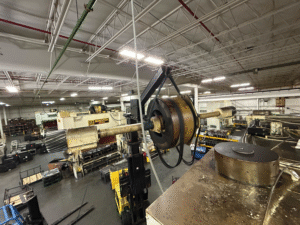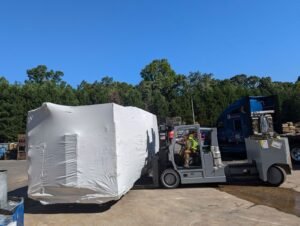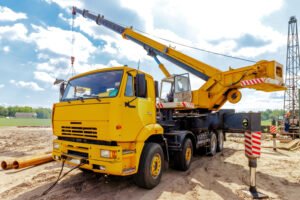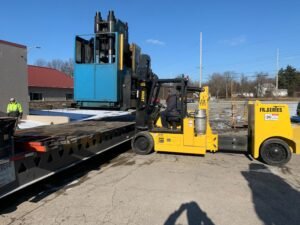In today’s competitive industrial landscape, the role of effective millwriting cannot be overstated. Industrial millwriting, encompassing the skills and knowledge required to maintain and optimize machinery and equipment, plays a pivotal role in ensuring smooth operations and maximizing productivity. This article explores the significance of industrial millwriting training programs and how they can significantly enhance industrial growth.
Understanding Industrial Millwriting
Industrial millwriting is the art and science of maintaining, troubleshooting, and optimizing industrial machinery and equipment. It involves a blend of technical expertise, problem-solving skills, and practical experience. Effective millwriting is crucial in minimizing downtime, extending equipment lifespan, and ensuring operational efficiency in various industrial sectors.
Skilled millwriters are indispensable in industrial operations, acting as key personnel responsible for diagnosing faults, conducting preventive maintenance, and implementing improvements to enhance overall equipment effectiveness (OEE). Their role spans from routine inspections to complex repairs, making them integral to the reliability and performance of industrial assets.
Benefits of Industrial Millwriting Training Programs
- Improved Efficiency and Productivity: One of the primary benefits of industrial millwriting training programs is the substantial improvement in operational efficiency. Well-trained millwriters can identify inefficiencies, optimize processes, and implement best practices that streamline operations and reduce downtime. This efficiency translates directly into increased productivity and profitability for industrial enterprises.
- Reduction in Maintenance Costs: By proactively addressing equipment issues and performing preventive maintenance, trained millwriters help reduce unplanned downtime and costly repairs. This proactive approach not only extends the lifespan of machinery but also minimizes the need for emergency interventions, thereby lowering overall maintenance costs.
- Enhanced Safety Measures: Safety is paramount in industrial settings, where machinery and equipment pose inherent risks. Millwriting training programs emphasize safety protocols, risk assessment, and compliance with industry regulations. Equipped with proper training, millwriters can mitigate hazards, create safer work environments, and prevent accidents, fostering a culture of safety within organizations.
- Quality Assurance and Compliance: Effective millwriting ensures that equipment operates within optimal parameters, maintaining product quality and consistency. Training programs educate millwriters on quality assurance practices, adherence to industry standards, and compliance with regulatory requirements. This adherence not only enhances product quality but also builds customer trust and loyalty.
Key Components of Effective Training Programs
Curriculum and Course Structure: A robust millwriting training curriculum covers fundamental principles, advanced techniques, and specialized skills relevant to industrial maintenance. Topics typically include equipment diagnostics, maintenance planning, root cause analysis, and emerging technologies in the field.
Practical Training Sessions: Hands-on experience is essential in millwriting training programs, allowing participants to apply theoretical knowledge in real-world scenarios. Practical sessions encompass equipment simulations, mock troubleshooting exercises, and field practicums conducted under expert supervision.
Certification and Accreditation: Accredited millwriting training programs offer certifications that validate participants’ competencies and skills. These certifications enhance credibility in the job market and signify adherence to industry standards and best practices.
Case Studies and Real-World Applications: Real-world case studies illustrate the application of millwriting principles in diverse industrial settings. Analyzing successful implementations and lessons learned from failures provides valuable insights into effective maintenance strategies and problem-solving techniques.
Industries Benefiting from Millwriting Training
Industrial millwriting training programs cater to a wide range of sectors, each benefiting from optimized maintenance practices:
- Manufacturing Sector: In manufacturing, efficient equipment operation is critical for meeting production targets and maintaining product quality. Millwriting ensures that production lines operate smoothly, minimizing downtime and maximizing throughput
- Energy and Utilities: In the energy sector, reliable machinery and equipment are essential for power generation and distribution. Millwriting training programs equip professionals to manage complex energy systems, enhancing reliability and efficiency.
- Aerospace and Automotive Industries: Precision and safety are paramount in aerospace and automotive manufacturing. Millwriting ensures the reliability of aircraft components, vehicle assemblies, and automated production systems, meeting stringent industry standards.
- Pharmaceutical and Chemical Industries: In pharmaceutical and chemical manufacturing, equipment reliability directly impacts product quality and regulatory compliance. Millwriting training programs focus on maintaining sterile environments, preventing contamination, and ensuring process integrity.
Implementing a Successful Training Program
Assessing Training Needs
Before implementing a millwriting training program, organizations should assess current skill gaps, equipment reliability metrics, and operational challenges. This assessment ensures that training initiatives align with organizational goals and priorities.
Choosing the Right Training Provider
Selecting a reputable training provider with expertise in industrial millwriting is crucial. Factors to consider include trainer qualifications, program accreditation, industry reputation, and compatibility with organizational needs.
Integrating Training with Existing Operations
Successful integration of millwriting training involves aligning program objectives with organizational strategies. Collaborating with operational teams ensures that training outcomes contribute to overall business objectives, such as improved uptime and reduced maintenance costs.
Monitoring and Evaluating Training Effectiveness
Continuous evaluation of training effectiveness involves measuring key performance indicators (KPIs), such as equipment reliability metrics, workforce competency assessments, and feedback from stakeholders. This evaluation enables organizations to refine training programs and maximize return on investment (ROI).
Future Trends in Industrial Millwriting Training
- Technological Advancements in Millwriting Tools
Advances in sensor technology, predictive analytics, and IoT-enabled devices are transforming millwriting practices. Training programs incorporate these technologies to equip millwriters with cutting-edge tools for predictive maintenance and real-time monitoring. - Virtual Reality and Simulation Training
Virtual reality (VR) and augmented reality (AR) simulations simulate complex maintenance scenarios, allowing millwriters to practice troubleshooting techniques in a safe, controlled environment. This immersive training enhances learning outcomes and prepares professionals for real-world challenges. - Industry 4.0 and Smart Manufacturing Implications
Industry 4.0 initiatives integrate automation, data analytics, and connectivity to optimize industrial processes. Millwriting training programs address the skills needed to support smart manufacturing strategies, such as digital twin simulations and remote monitoring of equipment.
Conclusion
Industrial millwriting training programs play a pivotal role in enhancing operational efficiency, reducing costs, and ensuring regulatory compliance across diverse industrial sectors. By investing in training initiatives, organizations not only empower their workforce with essential skills but also pave the way for sustainable industrial growth in an increasingly competitive global market.
Final Thoughts on Investing in Training Programs for Sustainable Industrial Growth
As industries evolve and technological advancements continue to reshape the landscape, the importance of skilled millwriters becomes more pronounced. Organizations that prioritize millwriting training demonstrate a commitment to excellence, innovation, and long-term success. By nurturing talent and fostering a culture of continuous improvement, industrial enterprises can achieve sustainable growth and maintain a competitive edge in the marketplace.


















